Celebrating The Moon Landing…Fifty Years Ago Today!
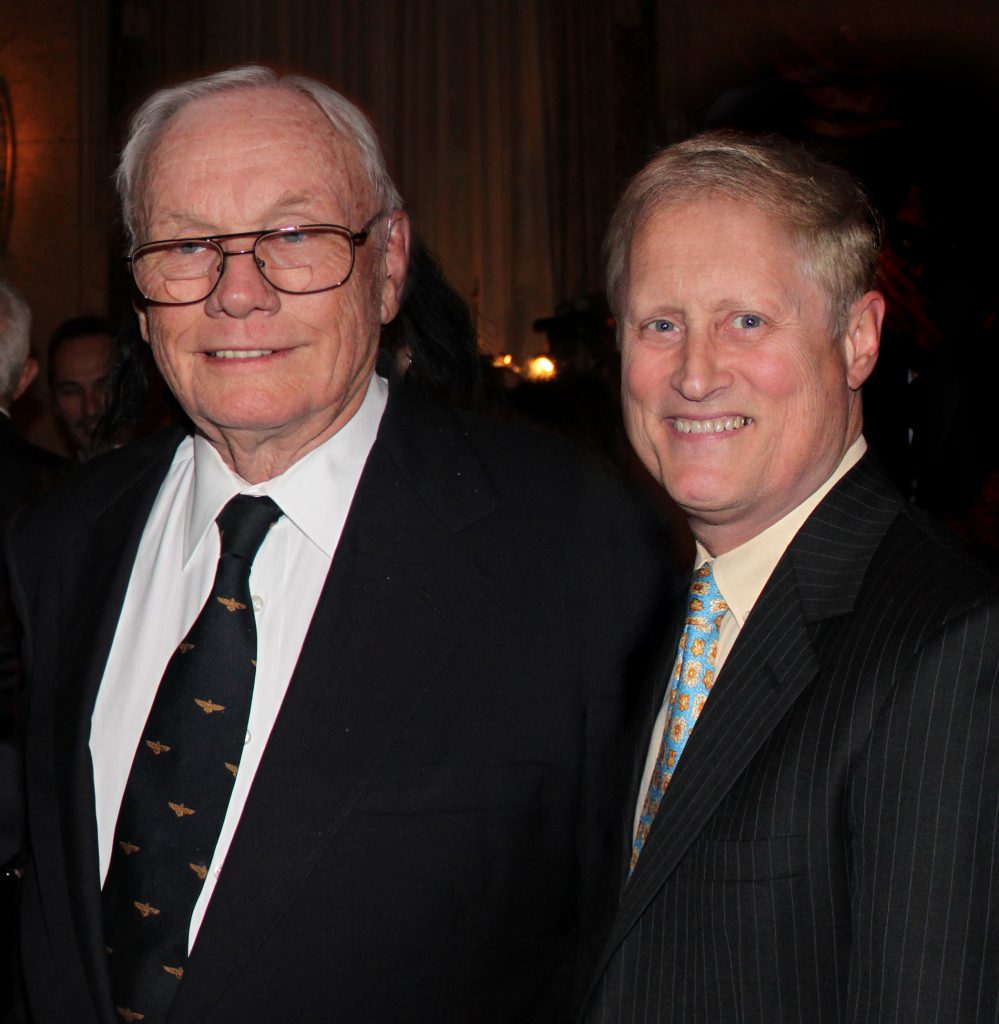
By Stephen Hofer, President, Aerlex Law Group
Today, July 20, 2019, is the 50th anniversary of one of the most significant events in human history, man’s first landing on the surface of the moon. Anyone over the age of, say 55, can remember where they were when Neil Armstrong took “One small step for man, one giant leap for mankind.” Most people were probably at home with family and friends watching the lunar landing on television. For me, it was a different situation: I was working as a reporter, covering the event for my local newspaper, The Anderson Herald, and the Associated Press from a tiny hamlet called Moonville, Indiana – population 47.
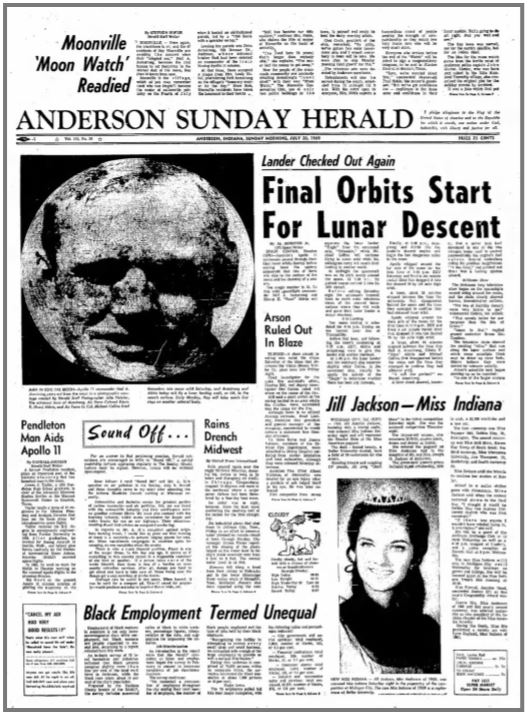
The pictures that accompany this article help illustrate the event from my perspective. Moonville had first attracted attention just a few weeks earlier, when Neil Armstrong’s brother, Dean, who lived in Anderson, a Central Indiana city of 70,000 (and my birthplace), had served as grand marshal of a Fourth of July parade held in Moonville, which was little more than a crossroads of two country lanes about 10 miles northeast of Anderson. The parade had begun as a joke. An Anderson police captain who was born and raised in the tiny village happened to mention on a local radio program that the residents of his home town were getting ready for their Independence Day parade, which consisted of “one 1950 Buick with a sparkler on top.” People started calling the radio station asking how they could participate and the whole thing mushroomed from there, resulting in an actual parade that attracted 50 units, including marching bands, and 4,000 spectators from as far away as Virginia and Arizona who lined the country roads. As grand marshal of the parade, Dean Armstrong actually ended up riding at the head of the parade in an honest-to-God 1950 Buick. The self-proclaimed “mayor of Moonville,” a 74-year-old lady named Leafy Noble, who had lived in the hamlet her entire life, presented Dean Armstrong with a plaque proclaiming his astronaut brother, commander of the Apollo 11 mission, as “honorary mayor for the day.” I was a student at Indiana University in those days, working as a reporter that summer for The Anderson Herald and I was assigned to cover that Fourth of July parade, an event that actually ended up attracting nationwide attention.
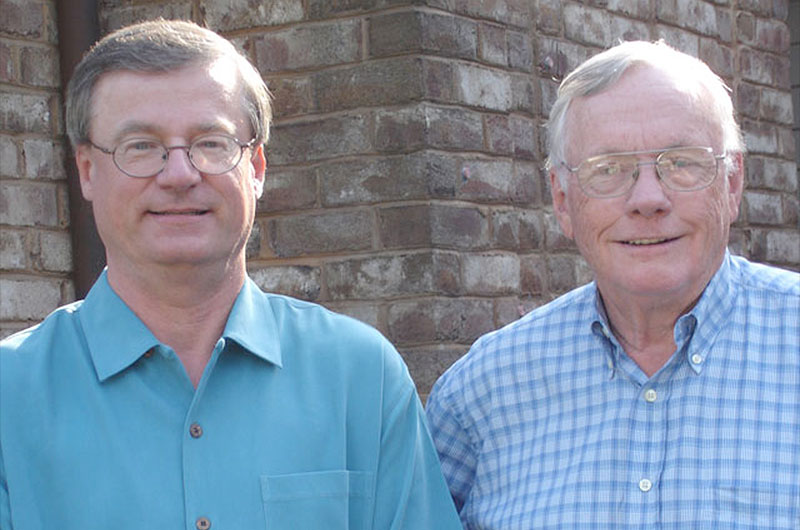
The Apollo 11 mission was scheduled to lift off just 12 days later and after having garnered all that publicity, the 47 residents of Moonville decided to hold a “Moon Watch” for the Apollo 11 lunar landing. The Moonville Conservation Club, one of only two non-residential buildings in the village (the other was a general store), hosted the “Moon Watch,” and again, I went to Moonville to cover the event. About 400 people, including many families, descended on the tiny town and in the hours before the actual moon landing, many of them ate picnic dinners they had brought with them for the event. As night fell and the time for the astronauts to exit the lunar excursion module (“LEM”) grew near, the people crowded into the little 50-by-25 building, with 60 folding chairs and one television set, and began concentrating intently on the ghostly black-and-white images that were being telecast from the single camera at the foot of LEM. As a reporter, I was watching both the broadcast and the people assembled around me. They were quiet, intensely interested in what they were seeing and anxious for the astronaut’s safety, but the silence was broken with loud cheers and applause at 10:56 p.m. Eastern Time, as soon as Neil Armstrong took his final steps off the LEM ladder and uttered those famous first words on the lunar surface.
Moonville mayor Mrs. Noble said “It was even more exciting than that day in July, 1918 when the first airplane flew over Moonville.”
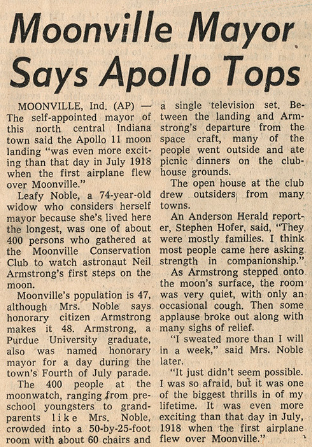
Facing a late deadline of just after midnight, I had to race back to my newsroom 10 miles away and write my story on a Royal manual typewriter – there were no cellphones in those days. I also spoke by telephone with a rewrite man for the Associated Press (AP) and the news agency ended up sending out a story about the Moonville “Moon Watch” that was picked up by newspapers all over the world, including The New York Times. The AP story quoted me by name and I discovered, in putting this piece together, that I was on the historic front page of The Indianapolis News the day after Neil Armstrong and Buzz Aldrin completed their moonwalk.
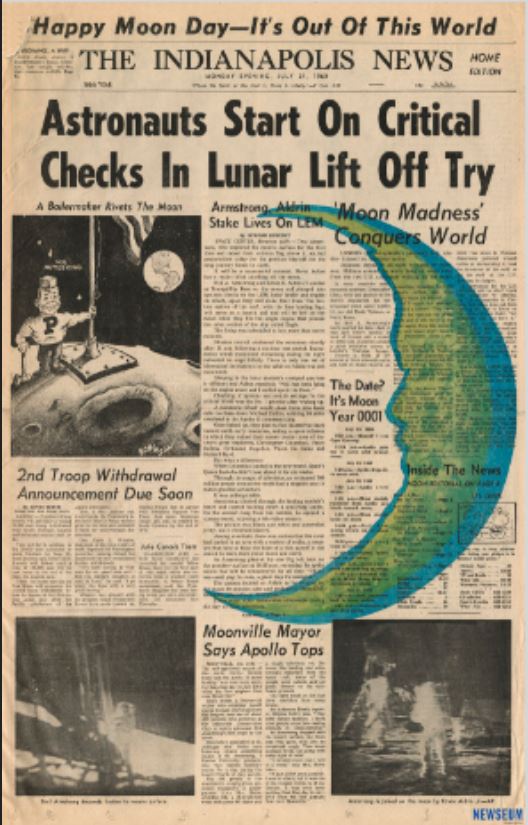
The final piece of the Apollo 11 story for me is the fact that I would later become a lawyer and, eventually, the founder and president of the Aerlex Law Group, one of the most-respected aviation boutique law practices in the world. Over time, my role in the business aviation world has resulted in me meeting (and even representing) many famous people in the aerospace world, including none other than Armstrong and Aldrin. I have met Edwin “Buzz” Aldrin, the second man to walk on the lunar surface, several times; he attends the Living Legends of Aviation awards ceremony almost every year in Beverly Hills. I met Neil Armstrong only once, in 2010 when my good friend and client, the famed test pilot, R.A. “Bob” Hoover, was chosen as the recipient of the Howard Hughes Memorial Award, a prestigious trophy given annually by the Aero Club of Southern California. It is traditional for former Hughes Award winners to attend the ceremony, which is held at the Jonathan Club in downtown Los Angeles, and Bob asked his good friend and 2003 Hughes Award winner, Neil Armstrong, to be his presenter. Armstrong, who chose not to capitalize on his Apollo 11 fame, but instead became a university professor after retiring as an astronaut, was a notoriously private man and a reluctant celebrity, and I was hesitant to invade his privacy after the ceremony, but, fortunately, Bob Hoover insisted that I meet the first man to walk on the moon. It was a relatively brief conversation, but I mentioned the events that had taken place in Moonville so many years before. Neil Armstrong smiled at the story and could not have been more gracious in our encounter. It is an experience I will always remember – and one I have been able to share with his sons, Rick and Mark, in the years since then.
